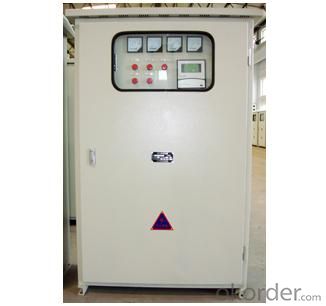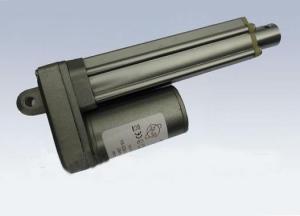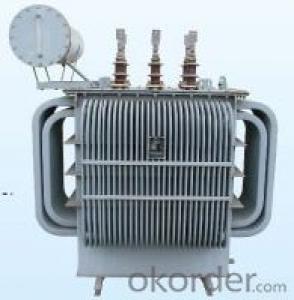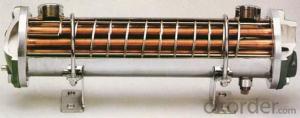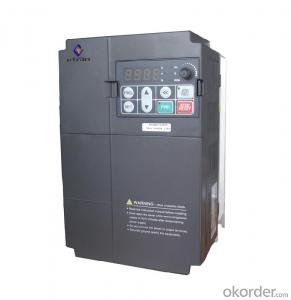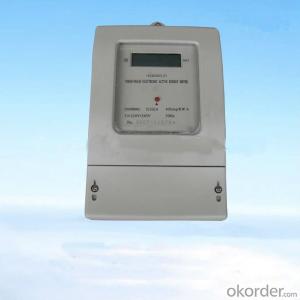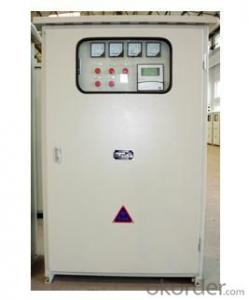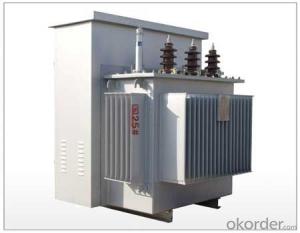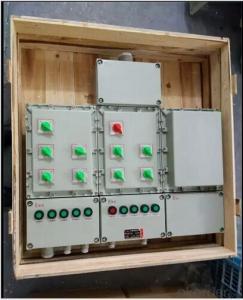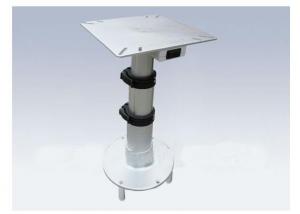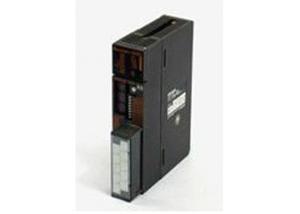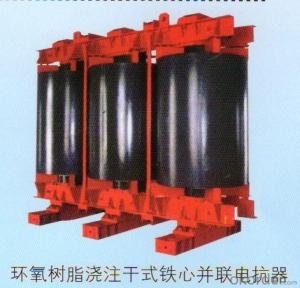XPZW Intelligent LV integrated power distribution box
- Loading Port:
- China Main Port
- Payment Terms:
- TT OR LC
- Min Order Qty:
- -
- Supply Capability:
- -
OKorder Service Pledge
OKorder Financial Service
You Might Also Like
XPZW Intelligent LV integrated power distribution box
1. Application and Characteristics
LV Intelligent Distribution Box of XPZW type is an integrateddistribution box with distribution and reactive power compensation, which canbe installed with transformers on the same pole or mounted on lines poles andwalls, etc. By selecting the appropriate capacity, the low voltage intelligentpower distribution box may keep power factor at load feed point at an optimallevel.
Lowvoltage intelligent distribution box of XPZW type uses distribution intelligentmonitor terminal as the control core, this intelligent monitor terminal ispowered by full digitalization design, communication sampling, man-machine interface128 * 64 dots large-screen LCD display, all-metal enclosure design, to effectivelyimprove the electromagnetic compatibility indicators, the installation with embedded/ wall-mounted series installation method meets the DIN standard, themotherboard uses AMT surface mount technology equipment which consists of distributionmonitor, reactive power compensation,harmonic analysis, event logging, energy metering, I/0 interface, temperaturesensor interface. The device provides RS232/485 serial port 1 and RS-485 serialport 2, serial port 2 is a data forwarding port which mainly supports formulti-function electronic watt-hour meter data forwarding. Serial port 1communication method supports twisted pair, coaxial cable, data radio, GPRS, andalso can use light to communicate with the MODEM and fiber.
2、Parameters
PowerSupply:85V~265V(type)
Weight:1.5Kg
Measuringsignal:0~5A
Measuringmode:AC sampling
Measuring voltage:59V~280V
Measuring current:0~5V
Measuring power factor:lag0.200~ lead 0.200
Measuring harmonic:Frequencyspectrum display
Measurement of active power:0~999.9Kw
Measurement of reactive power:0~999.9Kavr
Measuring electric degree of active power:0~9999999.9Kw/H
Measuring electric degree of reactive power :0~9999999.9Kavr/H
3. Functional description
Thedevice can record once at 15 minutes intervals, and save 90 days historicaldata. Recording density of 15-minute, 30 minutes, 45 minutes, 60 minutes areoptional.
4. Switching control guideline
Controller takes "#" control criteria, the top and bottom limitationsof voltage on each phase and reactive power can be set by users.
1) Voltage between UL and UH, the controller is in auto-switching state. (UL setsundervoltage threshold for users, UH setsovervoltage threshold for users).
2) It is locked while voltage is below UL, which can not be switched without reactivepower; and it can be released when the voltage is greater than UL, and back to auto-switchingstate.
3) Closed and locked when the voltage is higher than UH, without reactive powerno switching; be released when the voltage is fall back to (UH-6) and return toautomatic switching state
4) Under auto-switching state, the controller measures load reactive power, ifthe value is greater than set value, then the capacitor starts; if the capacitivereactive power is greater than the value for switch off, then the capacitor is off.
- Q: I just moved into an apartment building that apparently has a chronic problem with power surges. The power tends to go on and off several times a week, for no apparent reason. I know I need to buy power surge protectors for all my equipment, but I don't know what type. I've seen surge protectors (multi-plugs) that say 875 joules, 1,045 joules, and so on, but I don't know how to translate that in terms of equipmentFor example, I have a TV, DVD Videocassette player, and high-quality music equiment all plugged into a multi-plug in the living room. Should I buy a multi-plug power surge protector for this area, and what energy requirement should that surge protector have if I'm going to plug all that equipment onto it? What type of a power surge should I buy for my computer? What about the fridge? Air conditioner? Remember, I'm probably going to need to put power surge protectors all over the place, so which would be best for the different types of equipment in a home?Thanks!!!
- If I were you I would get a good surge protector and UPS, or uninterruptable power supply. Make sure the surge protector is a quality unit. Actually, I would buy an Isobar surge protector as most UPS units don't have this type of protection. Many are only designed to provide power, not protection. They are good units with real protection. I would then plug the UPS into that. The Isobar will stop surges and spikes (they are different things), and the UPS will protect your equipment from the sudden shut downs and start ups from the loss of power.
- Q: I am using a piece of equipment that uses plastics hoses to connect three metal pieces (a vacuum pump, a separation chamber, and a rotating sieve). When I touch each of these to remove material I am collecting after use, I get a small shock. What can I do to prevent this?Also, there is a loose, partially exposed wire. What can I do about this? As far as I know, it has no function.
- If you live in an old house and keep receiving shocks when you turn on the lights, check the outlets. If they have only two holes, you probably have outdated circuitry that isn't grounded. If you live in a house with updated, grounded circuitry and you still get shocks, however, the problem may be a buildup of static electricity from the carpeting. In both cases, the electricity uses you as a path to ground. Before the electric code began to require grounding in all newly installed residential circuitry, houses were wired with two-strand electrical cable with a hot and neutral wire. In this kind of wiring, even a small failure of the wire insulation can expose a person to electric shock. It happens because the person's body completes a circuit between the exposed wiring and the earth. Wearing rubber-soled shoes in the house can reduce the risk of this kind of shock, but a safer solution is to upgrade the wiring. Ground Faults Even if your house has code-approved grounded wiring, you still can get a shock by touching exposed wires or metal that is in contact with them. This rarely happens intentionally. It is more likely to be the result of handling a poorly insulated appliance, or one with a loose internal connection, under conditions that give electricity a path to ground through your body. To prevent this, avoid using old appliances, especially those with loose connections, and install ground fault interrupting (GFI) outlets in the bathroom, kitchen, outdoors and any location where wet conditions increase the risk of unintentional grounding.
- Q: I understand that the frequencies emited from cell phones can interfere with the electrical equipment in ICU's; however, why can't patients have regular phones in ICU's; regular chord phones shouldn't emit frequencies or do they?
- My mom was just in cardiac ICU and they did let people use cell phones as long as they were on vibrate. It was annoying though, so many people chattering away when there were some very sick people in there trying to recover from surgery. Hospitals are noisy enough and it was hard as it was for my mom to sleep. I took my phone calls out to the hall. My mom could call out if she wanted by asking the nurse and we could call into the nurse but not call in directly. That was best so my mom could get some rest. Phones aren't apporpriate everywhere.
- Q: I need to cut a hole through 2(ish)cm of metal, or some sort of composite material I have at home to feed a few wires through. Is it possible to do it without any electrical equipment?
- A pneumatic drill
- Q: i am in college and my friend tried to explain his major in electrical engineering but i am not completely sure what an electrical engineer does.
- In a nutshell. A changer of materials and its applications in the Electrical Field.basically. Awarded a degree of some sort. Able to search for results and perform specific calculations. Read, interpret and design electrical drawings. Probably specializes in one or more with commissioning, insatallation, repair,design, construction, maintenance, manufacture and testing of electrical equipment. We are clever peoplereally speaking. Hope this helps!
- Q: Do you find batteries die faster than they should, light bulbs flicker or go out too quickly, electrical equipment does werid stuff or dies sooner than it should. (If you don't believe in vampires, this question is not directed at you.)I suspect it's more of a psi-vamp than sang problem, but I'm currious. I've had some weird experiences with the computer and one small printer ar work. Also, I had a period where remote controled TV's would go on by themselves. I don't have that problem now, though.
- I do know that i have lots of problems with electronics ranging from computers to cell phones, and and watches to mp3 players. I'm not sure how common that is for vampires or what it has to do with being one though.
- Q: i have System:Hifonics BXi 2608D 2600 Watts RMS Mono Car Amplifier4 ohms: 850 watts x 1 chan. 2 ohms: 1700 watts x 1 chan. 1 ohm: 2600 watts x 1 chan2 KICKER S12L7 12 Solo-Baric Dual 4 ohms750 RMS 1500MAX a pieceI have it on a 5 farad capacitor but i believe that capacitor is a waste cause my lights dim very badly. I realize that kinetik has all different battery sizes. Whats the best battery to get if i run the battery on my my system only.and also what size should i get if i want to run on my car and system i still havent made my mind of
- Get pair of 120 amp batteries and put them in parallel and you should have more than 2600 watts to dissipate into the amp. Next you need a big alternator that can feed those batteries, plus the battery tha drives the car. The capacitor isn't going to do squat for this set up.
- Q: A. Lockout/Tagout involves placing a physical lock and a tag on electrical equipmentB. Lockout/Tagout is necessary prior to working on electrical equipmentC. Lockout/Tagout is intended to ensure that electricity is not returned to the equipment by anyone until it is safe.D. Lockout/Tagout is to be used only in extreme cases of potential electrical hazard.
- D is not true - a lock out tage is used whenever applying electricity to the circuit would result in dangerous conditions. When repair work is being done on the circuit equipment for example. Lock out tage are used for more then just electrical too.
- Q: highest Temperature i can reach in a lab with electrical discharge i do not care if the equipment gets destroyed or not i just want to know the possibility of the highest temperature you can reach with electricity if there is no limit then simply say no limit. if you know the best possible method please explain as much as possible. thanks in advance.
- There is a limit. The temperature of an electric arc (the plasma formed by an electrical discharge) is on the order of 10,000 C. This temperature is high enough to melt any substance known and to vaporize almost any substance known. Of course the amount of heat contained in that arc depends on a number of things like the amperage, the electrical power, and the material making up that plasma. You can produce an arc with a flashlight battery but the heat content of that arc is tiny. However, if you are a group of atoms of, for example, copper, participating in that arc, you are going to melt and some of you are going to vaporize. If you want to learn more about exotic ways to acheive very high temperatures (enough to initiate nuclear fusion), google the Lawrence Livermore National Laboratory and their project on laser ignition for fusion research.
- Q: BQ: Is it safe to unchain any of my electrical equipment yet?
- 11 August year 4500
Send your message to us
XPZW Intelligent LV integrated power distribution box
- Loading Port:
- China Main Port
- Payment Terms:
- TT OR LC
- Min Order Qty:
- -
- Supply Capability:
- -
OKorder Service Pledge
OKorder Financial Service
Similar products
Hot products
Hot Searches
Related keywords

